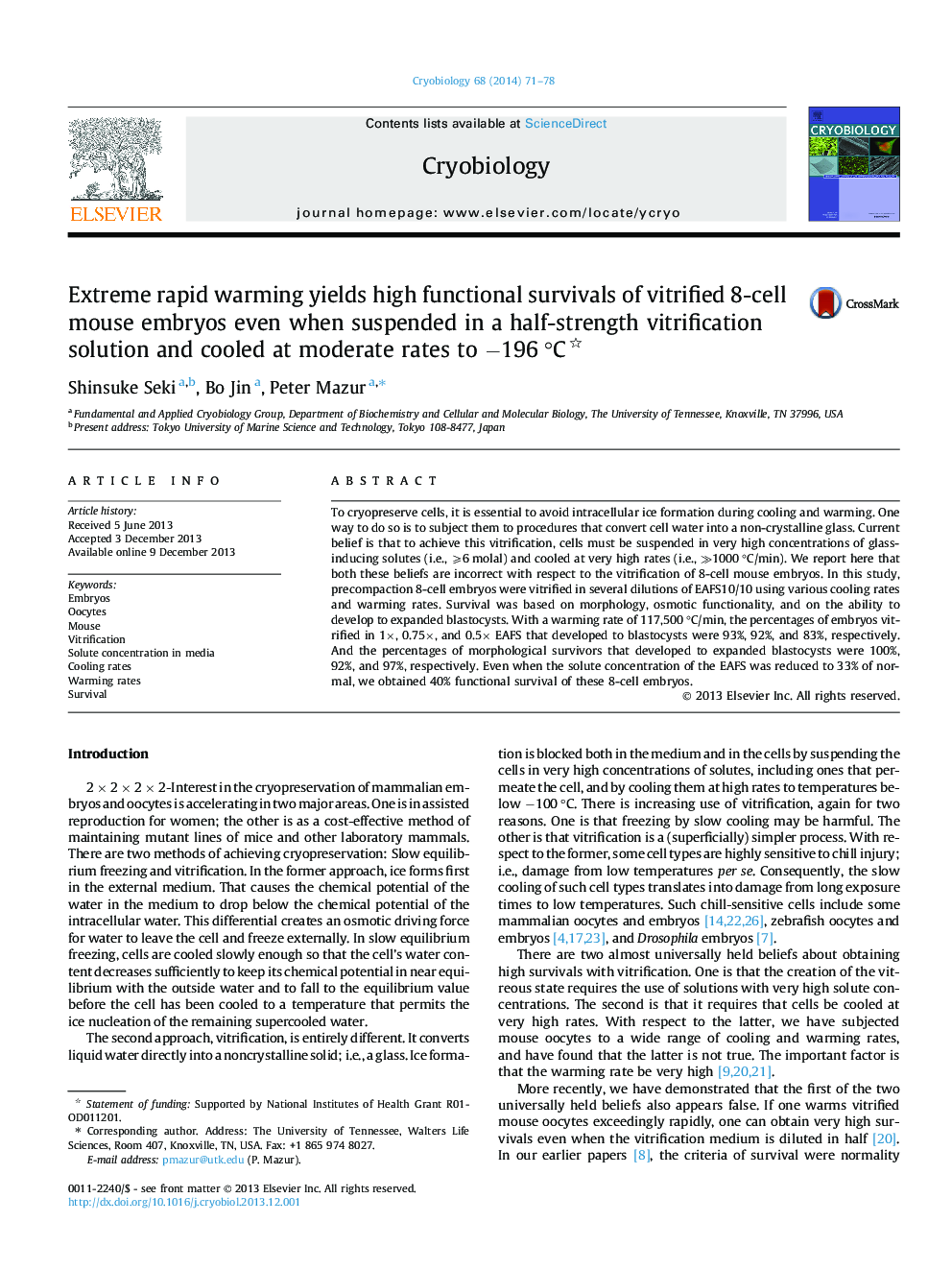| Article ID | Journal | Published Year | Pages | File Type |
|---|---|---|---|---|
| 10928027 | Cryobiology | 2014 | 8 Pages |
Abstract
To cryopreserve cells, it is essential to avoid intracellular ice formation during cooling and warming. One way to do so is to subject them to procedures that convert cell water into a non-crystalline glass. Current belief is that to achieve this vitrification, cells must be suspended in very high concentrations of glass-inducing solutes (i.e., ⩾6 molal) and cooled at very high rates (i.e., â«1000 °C/min). We report here that both these beliefs are incorrect with respect to the vitrification of 8-cell mouse embryos. In this study, precompaction 8-cell embryos were vitrified in several dilutions of EAFS10/10 using various cooling rates and warming rates. Survival was based on morphology, osmotic functionality, and on the ability to develop to expanded blastocysts. With a warming rate of 117,500 °C/min, the percentages of embryos vitrified in 1Ã, 0.75Ã, and 0.5à EAFS that developed to blastocysts were 93%, 92%, and 83%, respectively. And the percentages of morphological survivors that developed to expanded blastocysts were 100%, 92%, and 97%, respectively. Even when the solute concentration of the EAFS was reduced to 33% of normal, we obtained 40% functional survival of these 8-cell embryos.
Related Topics
Life Sciences
Agricultural and Biological Sciences
Agricultural and Biological Sciences (General)
Authors
Shinsuke Seki, Bo Jin, Peter Mazur,
